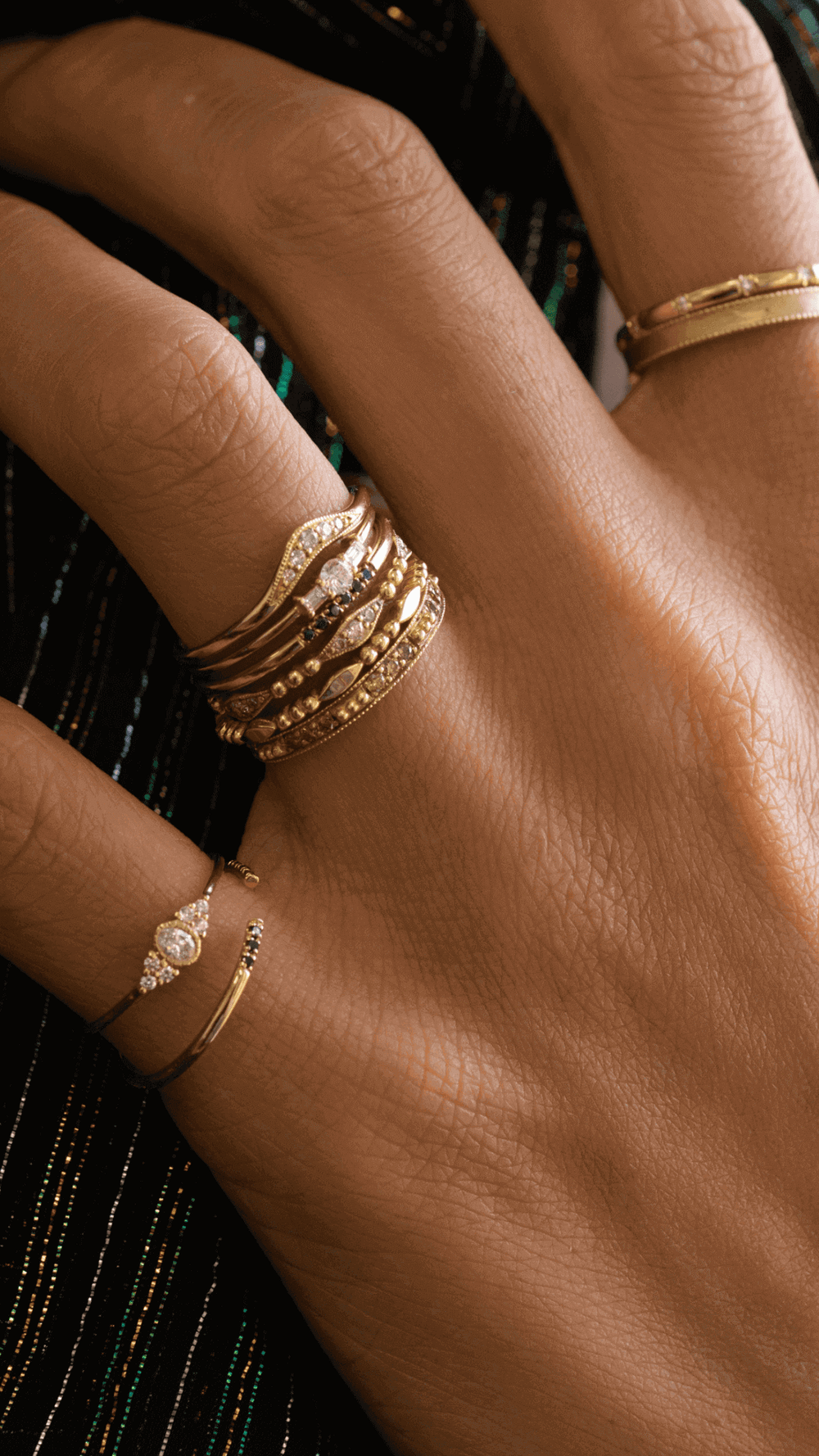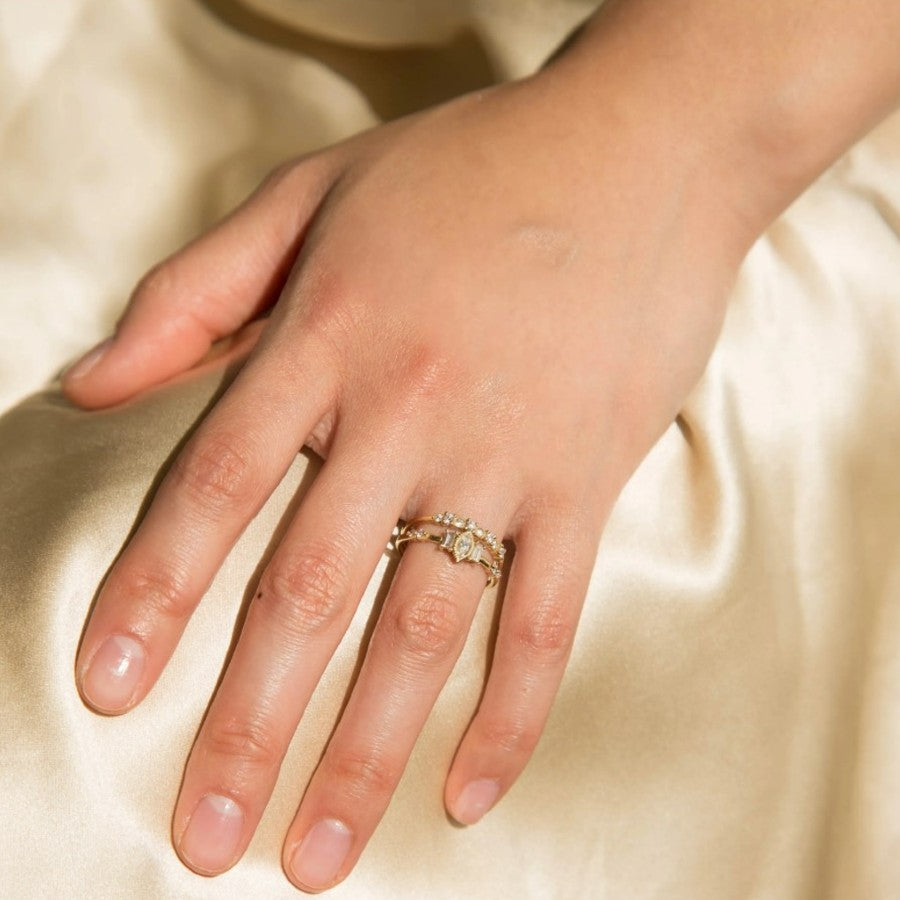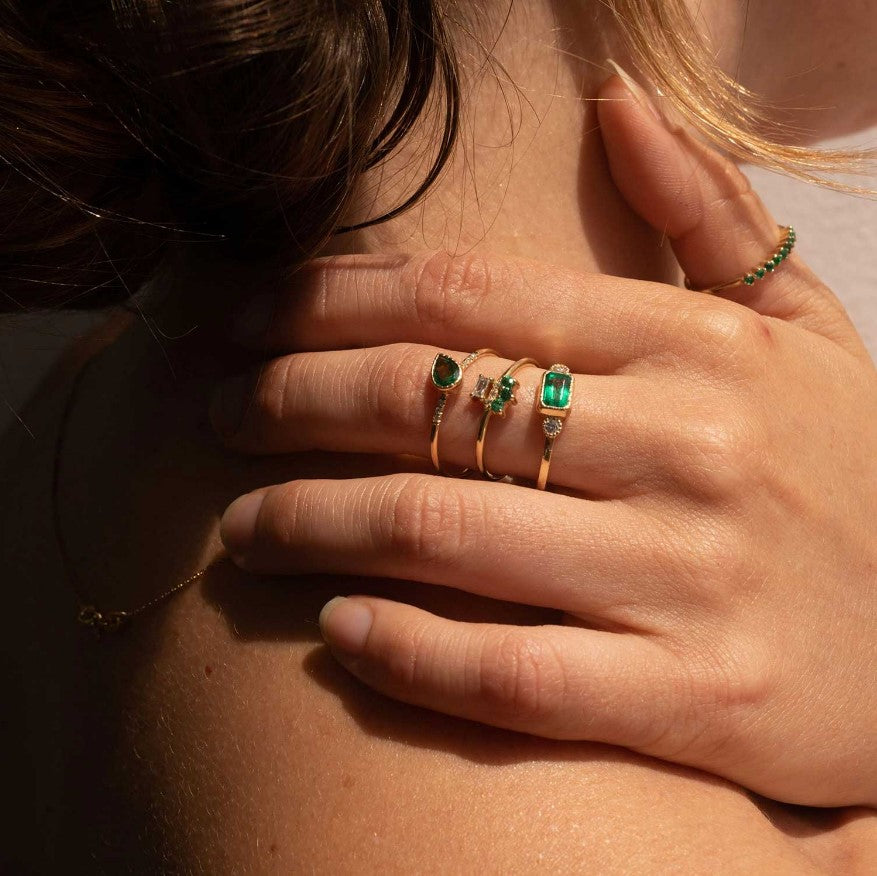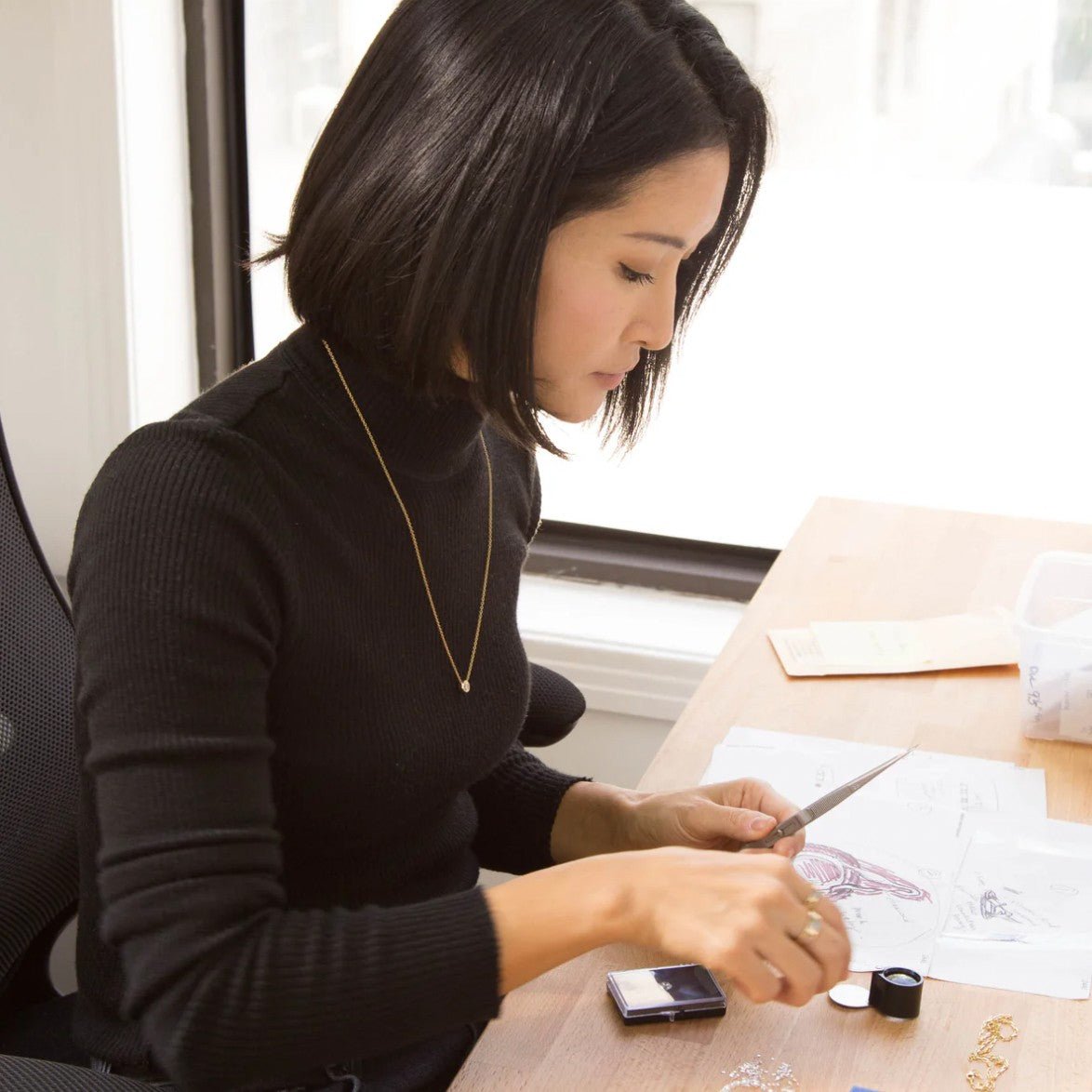As rare as they are beautiful, diamonds have come to symbolize so much for us, from strength, beauty, and success to everlasting love. For at least 500 years, the diamond engagement ring and wedding ring have been used to commemorate an enduring commitment between two people. Diamonds have also become the traditional standard for marking the equally rare beauty of 60th and 75th wedding anniversaries.
Another role the diamond plays is that of birthstone for the month of April. So how did most Aries and some Tauruses get so lucky?
How the diamond became April’s birthstone.
The association between the diamond and the zodiac sign Aries dates back to the middle ages. The astrological characteristics commonly attributed to the sign, which covers most of April, include optimism, independence, and a strong will. It’s easy to see how the inspiring sparkle of the diamond could be associated with the sign.
Across centuries and cultures, birthstones have shifted and conflicted, but in 1912, the American National Association of Jewelers published a standard list of birthstone gems dedicated to each month. Whether this was for the sake of consumer protection or commercialization has been up for debate, but the monthly birthstone list has remained relatively stable ever since.
What was once thought to be controversial based on its commercialism is now widely accepted as the official birthstone list.
What makes diamonds so special?
Diamonds are one of the true wonders of the natural world. A mineral forged at least 100 miles beneath the Earth’s surface, diamond is the only gemstone composed of a single element, carbon, the essential building block of the Earth and all life on it.
Through a combination of intense forces—pressure, temperature, and most of all, time—the diamond also happens to be the hardest naturally occurring substance on the planet. The word itself is derived from ‘adamas,’ the Latin word for unbreakable or invincible.
Even under optimal conditions, it still takes at least a billion years for carbon to crystallize into a radiant and extremely rare gemstone that dazzles the eye like no other.
However, diamonds don’t come out of the ground in the brilliant, jewelry-grade form we are used to seeing on engagement rings and diamond necklaces. It takes a smart, skillful, and artistic approach to bring out the best in each stone.
It’s the cut that counts.
Of the “4 Cs” by which diamonds are evaluated for quality—cut, color, clarity and carat—cut is arguably the most variable and impactful when it comes to how humans can affect a gemstone’s brilliance and aesthetic appeal.
Diamonds can lose up to half their weight during the cutting process, so it’s a balancing act between size and beauty. Decisions must be made as to which cut will work best to transform a certain type of rough diamond into a beautiful and valuable finished product.
The more facets a diamond has, the more it will capture and reflect light, making it sparkle in ways that only a diamond can. On the other hand, a sophisticated design and flawless gem can yield beautiful results with fewer cuts.
There is evidence of diamond cutting dating back as far as the year 1330. There are also cuts that were developed in the 20th century and continue to evolve. Here is a list of some of the most beloved diamond styles around today.
A guide to the most classic and popular diamond cuts.
Round Brilliant Cut Diamond
This classic shape is also far and away the most popular, accounting for two-thirds of all diamonds sold. Cut into either 57 or 58 facets, the round brilliant cut diamond produces maximum light return.

1ct Melody Baguette Equilibrium Ring
Princess Cut Diamond
This contemporary style does not cut corners when it comes to brilliance and dramatic flair. One of the more recent and most popular of the diamond cuts, the square princess cut diamond displays its color and sparkle right out to its pointed edges.

Champagne Diamond Point Equilibrium Ring
Emerald Cut Diamond
With edges cut laterally at 90-degree angles, the emerald features what is known as a step cut. It has relatively few facets compared to other cuts and a large, flat table that runs lengthwise, giving it an appearance that has been likened to a clear pool of water or a hall of mirrors. Simple, understated elegance and cropped corners give the emerald cut diamond a retro Art Deco vibe while highlighting its clarity and color.

Cushion Cut Diamond
This timeless, pillow-shaped cut is popular among those seeking a vintage style that combines rounded corners with a square or rectangular shape that allows for larger facets. Initially very popular as a “mine cut” in the 1800s, they have become an old-world favorite in modern times.

Cushion Trillion Baguette Equilibrium Ring
Radiant Cut Diamond
The aptly named Radiant diamond features 70 facets and trimmed corners that echo the elegant clean lines of an emerald-cut but feature deep facets arranged to really catch the light and sparkle brightly. The edges are cropped, giving it eight corners instead of the four sharper corners found on the princess cut. This cut has only been around since 1977 and can be harder to find than some of the other styles.
Asscher Cut Diamond
Originally developed in 1902 by legendary diamond cutter Joseph Asscher, this unique evolution of the step-cut diamond was the first ever cut to be patented. It’s a square take on the more rectangular emerald cut diamond, with a distinctive ‘x’ shape when viewed from above. Originally cut with 58 facets, it was increased to 74 by Joseph’s descendents to dramatically increase its full-spectrum light display. These diamonds are often found today on the hand of a celebrity.

Pear Cut Diamond
With its distinctive tear-drop shape, this bold, yet delicate hybrid cut borrows aspects of the round and marquise cuts, the pear shape is an elegant and brilliant way to accentuate gem size and finger length. An expert cut is essential to ensure maximum symmetry and brilliance.

Oval Cut Diamond
Classically graceful and versatile, the oval cut diamond works well with other types of jewelry as well as long, slender fingers. Its elongated appearance creates the illusion of being larger than another cut of the same carat, one possible reason it is a popular choice for engagement rings. The oval’s 57 or 58 facets impart a similar shine and sparkle to that of the round brilliant cut.

Marquise Cut Diamond
Originating in the 1700s and commissioned by King Louis XIV, this long, shallow ring with curved sides and pointed ends produces a brilliant sparkle despite its unique shape. It is important that this cut is executed well, however, as a poor cut can reveal flaws and an undesirable “bowtie” shape in the center.

Which diamond cut is the right choice?
Whether it’s for an engagement ring, diamond wedding ring, or birthstone-themed gift for the April-born person in your life, the diamond you choose can depend on many factors. Quality is key, of course, but the variety of cut types available leaves it up to the eye of the beholder to ultimately decide which cut will speak to the recipient.



